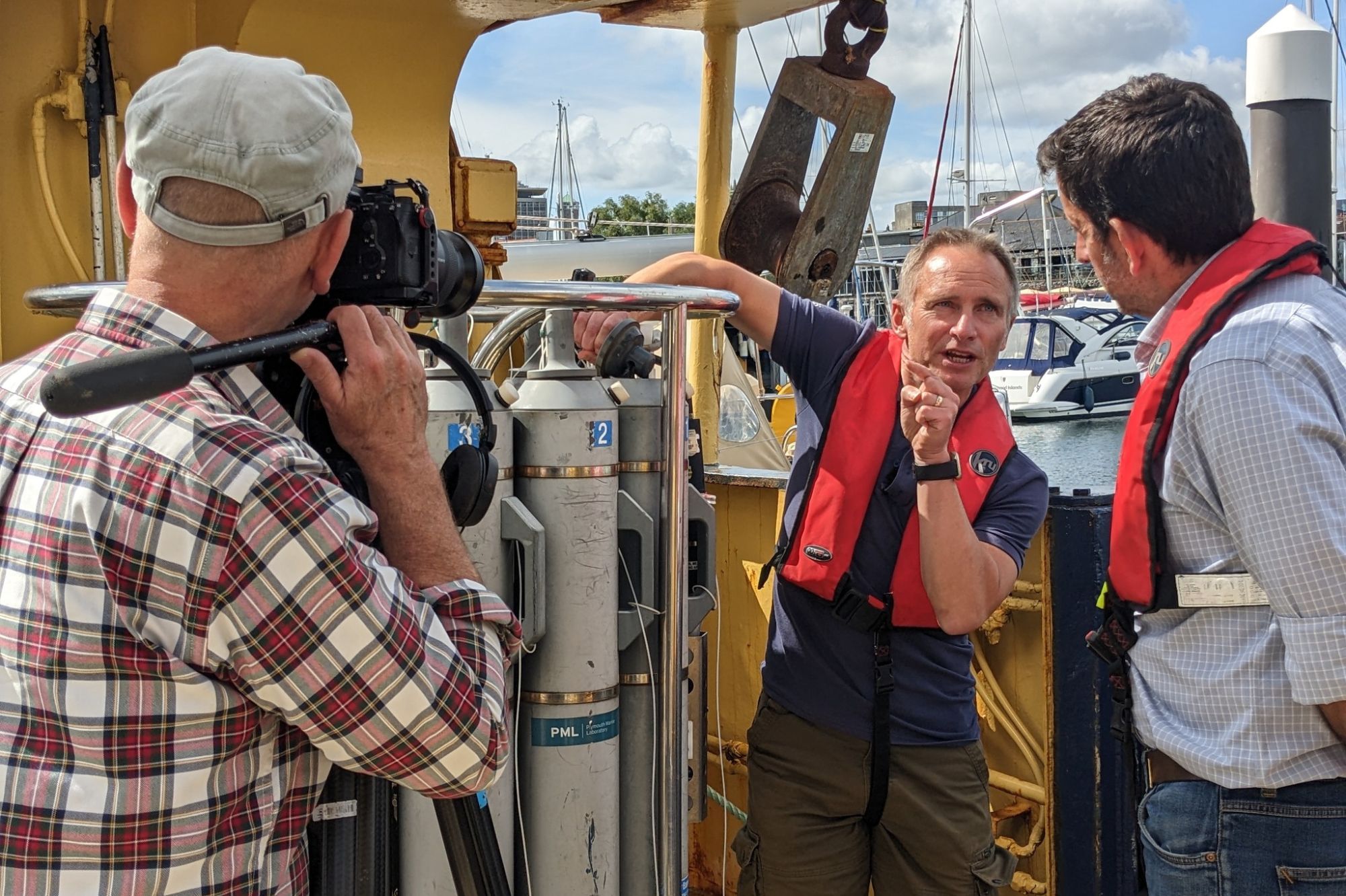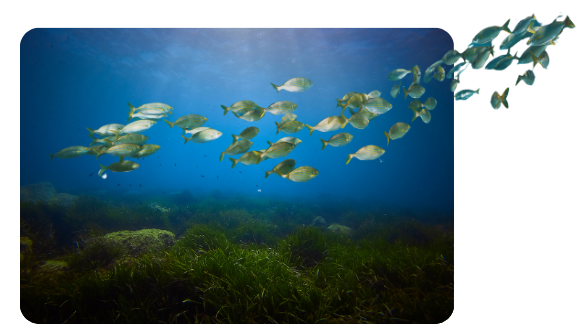Story
Professor Smyth’s vision for the future of the laboratory
29 October 2025
As he settles into the role of Director of Science, Professor Tim Smyth shares how he plans to build on PML’s strong foundation of collaboration and solution-driven science to create real-world impact.

When Professor Tim Smyth stepped into his new role as PML’s Director of Science, he described it as “the honour of my career” – and a responsibility not taken lightly.
After nearly three decades at the Laboratory, Tim’s vision for the future blends deep respect for PML’s heritage, with a forward-looking commitment to driving solutions to the most urgent issues facing our ocean – and humanity.
A focus on the big three challenges
Over the next five years, PML’s scientific direction will centre on three of the greatest threats facing our ocean: climate change, biodiversity loss, and pollution.
“Over the last few years, there has been an acceleration of some of the extremes and trends we’ve been seeing, across the world – and even here, just off the coast of Plymouth.”
“Even locally, what we’re seeing, is you know, unprecedented and I know that’s an overused term, but the marine heatwaves – the intensity of them and how long they occur – these are all the attendant impacts of climate change.”
Climate change, biodiversity loss and pollution are “the defining issues of our generation” he says, but “PML is ideally positioned to help address them.”
From ocean acidification to plastic pollution, PML’s science aims to inform action and policy on an international scale.
“Our science plays a huge role, in not just informing debate, but in creating action. These issues are not just areas for advocacy. Our research has always gone beyond describing what the problems are – it provides solutions to these problems.”
Accelerating solution-driven science for a changing world
For Tim, maintaining PML’s reputation for rigorous, high-impact science goes hand in hand with ensuring it remains relevant and responsive. He describes how we need solution-driven publishing to meet the pace of societal change.
“I think the time it takes for scientific results to go from discovery to publication, has to be quick. Especially when governments are setting ambitious targets for things like renewable energy – for example, achieving Net Zero by 2050. Once an offshore wind farm goes in at sea, from installation to decommissioning, it has impacts lasting decades – our science needs to be ready to inform these decisions. These national targets require rapid decision-making, and our process for producing and reviewing science must keep up.”
“Of course, peer review papers remain the gold standard – it’s essential to ensure quality and accuracy – but we need to find a way to balance that rigour with the urgency of real-world decisions.”
“We’re seeing this challenge across energy, industry, and environmental management. Because of the urgent situation our planet is in – decisions have to be made on much shorter timescales. That’s a real challenge, because new research on potential impacts is often emerging just after major developments have already begun.”
The changing landscape of funding
He continues to explain PML’s own challenges in meeting these demands.
“Marine science is fundamental to tackling global issues, but the biggest challenge environmental organisations like PML face right now is funding,” he says. “I’ve been a part of PML for almost 30 years, and the financial landscape has evolved entirely.”
“When I joined, around 80% of our income came from core grants and only about 20% from commissioned research. That’s now almost completely reversed – roughly 30% comes from national capability, while around 70% is competitive funding.”
“As a charity, we must continue to adapt to the changing financial landscape over the coming years. Keeping ocean science high on political and public agendas is critical – without it, we lose our ability to understand and protect something central to our climate and biodiversity.”
He points to some of PML’s long-term time datasets – some spanning over a century – as vital tools for that must be continued and invested in, for detecting and understanding change. “These records show us the real stories unfolding in our seas,” he adds, referencing recent events such as the “almost continuous marine heatwave conditions” and octopus blooms in the Southwest.
Strength in partnership
As PML continues to evolve, Tim emphasises the importance of partnership. He sees PML Applications as key to bridging fundamental and applied science, ensuring that research translates into impact.
“Sometimes, during a project, you discover something new or better than what was originally proposed – but that flexibility isn’t always built into the funding model. That’s why PML Applications is so important: it focuses on applied science that delivers real-world impact and develops practical solutions – from tackling biofouling to advancing marine autonomy technologies and beyond.”
“Crucially, it also enables us to bring unrestricted funds into PML through Gift Aid, giving us more room to innovate and respond quickly to emerging opportunities. Over the past few years, that relationship has really strengthened and become even more meaningful.”
“Going forward, it’s about continuing to build that partnership between PML and PML Applications – making it even stronger but also being careful to preserve the necessary distinction between the two. They’re our commercial arm, and we’re the charitable organisation. Maintaining that balance, while growing together strategically, is absolutely critical for the future.”
Leadership at every level of the organisation
“To be Director of Science for somewhere as recognised around the world as PML is just a real honour,” he says. “I feel honoured and humbled at the same time to be following in the footsteps of Manuel Barange, Icarus Allen and Steve Widdicombe.”
Asked about his leadership style, Tim’s answer comes easily: authenticity.
“I aspire to be an authentic leader. And what do I mean by that? I mean someone who talks the talk and walks the walk,” he says. “But leadership isn’t something that happens to you; it’s something you actively participate in. I want to see great leadership at every level of the organisation.”
His philosophy is rooted in approachability and collaboration. “I don’t like meetings, that might surprise you! I prefer to walk the floors, see what people are doing, and share in their enthusiasm. That’s where real connections happen.”
